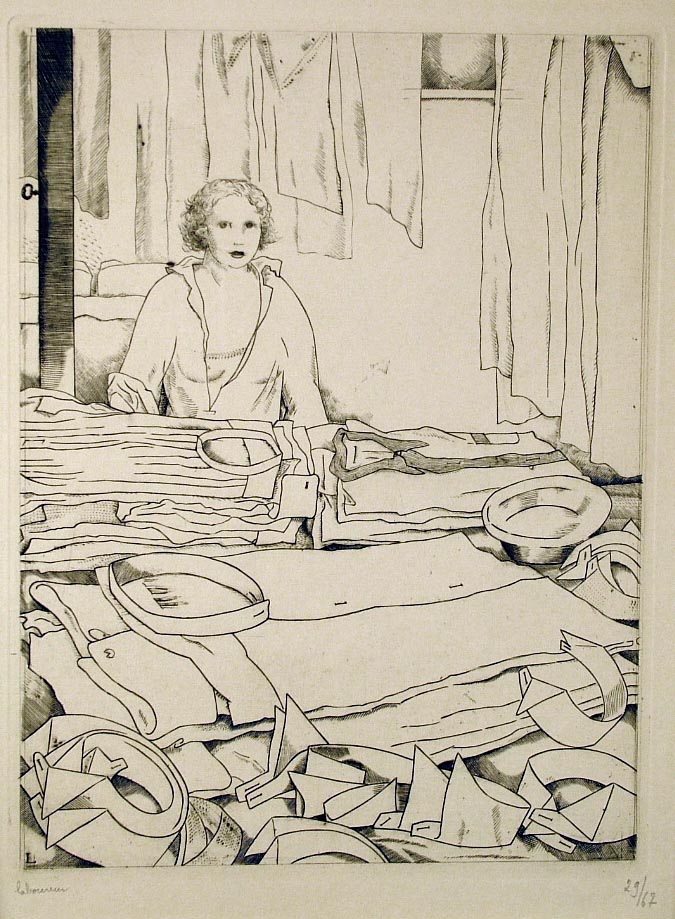La Repasseuse (The Presser)

Jean-Emile Laboueur (1877-1943), La Repasseuse (The Presser), 1937, engraving and drypoint. Signed and numbered in pencil (29/67) [with the monogram bottom left]. Reference: Sylvain Laboureur 527, third state of three. In good condition, on tan wove paper, with wide margins (remains of prior hinging verso), 9 1/4 x 7, the sheet 13 1/2 x 10 1/2 inches, archival mounting.
A fine impression.
Jean-Emile Laboureur traveled to Paris in 1895 intending to study law at the Sorbonne, but found himself drawn to the nearby famed Academie Julian, and although he never officially matriculated there, he became immersed in the Parisian art scene. In 1886 he met Toulouse Lautrec, who influenced Laboureur’s emerging aesthetic style, as did the work of Odilon Redon, Bonnard, and perhaps most notably Felix Vallotton, who became a close colleague. Laboureur traveled widely, staying for periods in the US and London, and studying classic art and printmaking in Italy and Germany. Although he had moved back to Paris by 1910, a time when analytical cubism was emerging in the work of Picasso and Braque, he continued working in an abstract, modernist mode, waiting until about 1913 or shortly thereafter to invent a cubist idiom all his own. Cubism remained an important theme for Laboureur, a theme he varied, sometimes using it as a strong design or compositional component, sometimes only as a subtle background element.
In La Repasseuse, Laboureur shares his fascination with the modernist shapes of the shirts and collars dwarfing the girl pressing them in the background. His work is perhaps looser than usual, and, at this mature stage of his career, brimming with confidence.
$900